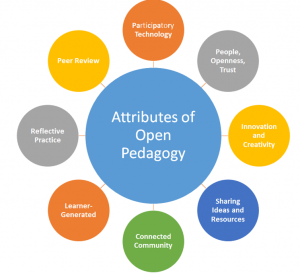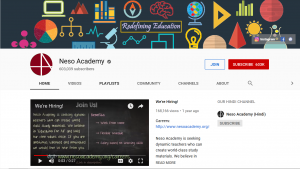1. Introduction
As the old proverb, it’s never too late to learn, nowadays with the incredible speed of the development of science and technology, it seems that studying will never be stopped. And this situation does not only occur on individuals, companies need to follow up the wave of improvements to deal with the complex and dynamic business environment as well. This environment not only include the development of technology, but also the increasing of globalization, changeable society conditions and improvements of ways to dissemination of information. To make sure the companies won’t be influenced by bad, and are able to deal with challenges calmly and remain profitable, having a knowledgeable, experienced and skilled working team is the critical factor. So it is unavoidable for companies to help employees to learn the required skills, techniques and knowledge to adapt to the environment. And therefore, the Corporate Training becomes essential for companies and needs to be put more attention on.
In fact, most of the companies have already carried out corporate training and gained some experience. But traditional corporate training still has its own inherent limitations. Since online study is improving rapidly, and also a large amount of online learners occurs, online learning has aroused the attention of training departments of companies and the idea of online corporate training has been put forward and gradually put into practice.
In this article, I am going to introduce what is online corporate training, and the advantages of online corporate training over traditional corporate training.
2. What is Online Corporate Training
To define online corporate training, I need to first introduce the foundations and elements of Online Corporate Training. There are three of the technologies in use, which are CBT, WBT and MOOC.
2.1 Computer Based Training (CBT)
Computer based training is a new way of learning and new form of education. Course designers make course contents into the computer based forms such as computer programs, and provide them to learners, so that they can use these special programs for learning and training. CBT can be synchronous and asynchronous, as well as online, web-based, mobile, and distance learning. (p1, Computer Based Training and Web Based Training: Definition and Benefits!) CBT was originally designed for specific computer program learners, and achieved good results and feedback. Before the emergence of the Internet, CBT existed and worked well as an assisted learning tool. Because of the rapid development of the Internet and the emergence of the large number of users of Internet, the scope of CBT is also expanding rapidly.(p1, Computer Based Training and Web Based Training: Definition and Benefits!)
2.2 Web Based Training (WBT)
WBT has many aliases such as e-learning, Internet-based training (IBT) and distance learning.(p2, Computer Based Training and Web Based Training: Definition and Benefits!) And it is one of the important components of CBT. WBT is characterized by the release of learning materials and designed training programs through the Internet and use of network technology, so that students can access to them through the internet. WBT is mostly designed with a multimedia since WBT can include text, graphics, animation, audio and video, etc. WBT may require additional bandwidth and software to improve efficiency. WBT contains the latest content of most topics, which learners can access through the network, and can modify, as well as customize their own learning methods and progress. WBT has been applied to different industries and organizations, including educational institutions at all levels, government agencies and even the military. WBT allows learners to access content in ways other than only computers. (p2, Computer Based Training and Web Based Training: Definition and Benefits!)
2.3 Massive open online course (MOOC)
Figure 1
Figure 1 shows the intrinsic openness to make a simple definition for MOOC. The Massive Open Online Course has been used as the most popular way for online corporate training due to its characteristics. This form of Online learning allows large number of learners to access the course. It is not only 100 or 100000, but unlimited, if learners are permitted to access and the course is still exist. And as form of CBT and WBT, it is posted online and might be opened for any learner who has an internet-connected device. Learners and instructors can interact online synchronous or asynchronous. Nowadays MOOCs are trying to simulate the environment of lectures at universities in order to improve learning efficiency on the premise of maintaining their advantages. (Sillak-Riesinger B. ,2017 MOOC: The Potential of Massive Open Online Courses in the Context of Corporate Training and Development.)
3. What is the advantages of Online Corporate Training
According to the article from CommLab India Bloggers, six advantages of online training are listed below:
3.1 Cost effective:
For Companies, corporate training costs human, material and financial resources. The more people need to be trained, the larger the company is, the more resources it needs to consume via the traditional corporate training. Training through Online learning means the learning materials can be used repeatedly and no additional training ground is required. So it makes no difference in training 20 employees or 100 employees, or even more. And therefore, online corporate training is highly cost-effective to an organization.
3.2 Enhanced productivity:
While organizing and managing training costs time and resources, productive hours for the employee are also occupied, which leads to a decline in productivity and loss of company benefits. However, online training can greatly reduce the loss of productivity. According to Brandon Hall’s research, online training can save 40% to 60% of employee time because of its characteristics of asynchronous compared with traditional training. This means that working hours are not wasted.
3.3 Scalable:
Because WBT itself has many learning resources that can be modified, and provides the curriculum framework available to curriculum designers. Training departments can add new themes, technologies and knowledge to the curriculum framework, or modify existing courses to meet different training objectives and the needs of trainers. The cost of this method is much less than that of traditional training. Therefore, online learning course has a higher scalability.
3.4 Tailor-made courses:
Because online training has higher scalability and less cost, it makes the design of courses more flexible. So that the training department can focus more on the learner’s age range, needs, occupation, education level and other factors to design the curriculum, and allocate resources according to the learning objectives to avoid unnecessary expenditure.
3.5 Ease of accessibility:
Because the courses are online, employees are able to access to them at any time, so they can choose a convenient time to study. In addition, with the best translation expertise offered by many online learning and designing companies, training courses can be effectively translated into many international languages.
3.6 Better employee retention:
In 3.4, we mentioned that online training has the characteristics of Tailor-made courses, so employees will receive more appropriate education. This makes them feel more confident and valuable, more responsible for training organizations that help them learn new knowledge and skills, and easier for companies to keep employees. In addition, web-based courses have more forms, more interaction and customization, and increase the fun of the workplace.
4. Reason why Online training might not the first choice
According to the article from CommLab India Bloggers, 4 limitations of online training compared to ILT(instructor-led training) are listed below:
4.1 ILT Provides Focus
When employees take part in face-to-face training courses, they can pay more attention to what they are taught. The environment requires their concentration. Unlike online learning, employees learn courses on desktops or laptops, but there are other things that distract them from the course. Colleagues may stop to solve work-related problems, managers may need clarification, and phone calls or messages may flicker on computer screens. These distractions can prevent employees from concentrating on the course, and learners may finish the course more than once without learning anything.
This is less likely to happen in the classroom environment, because the interferences are less than online courses and the employees can really focus on the topics. Employees are expected to pay attention and participate in the discussion.
4.2 ILT for Teaching Complex Information
When teaching complex topics, ILT can provide professional and targeted guidance to employees. Help students to complete the topic, explain the topic, and answer the teacher’s questions. When explaining a topic, the teacher can measure the learner’s understanding and adjust the teaching progress in real time. Based on interaction with the learner, student can go back to the beginning or move on to the next step.
4.3 ILT Provides Opportunities for Practice
Classroom training helps to train employees in soft skills, such as negotiation skills that can be practiced in class through role-playing. Then, trainers can test employees to make sure they have learned skills.
4.4 ILT Gives Access to Skilled Instructors
ILT provides opportunities for skilled teachers; they don’t have to be inside company. You can also outsource your training to third-party service providers. When the organization can attract the best people in the field as a guest speaker, it can contact experts on this topic, give learners the opportunity to receive the training of the best people, and clarify their doubts about this topic.
A good tutor will adapt to the various learning needs of students. The tutor can identify and focus more on participants who have specific needs in understanding the subject or applying the knowledge he learns. Excellent lecturers will adjust their training content and incorporate updates and revisions into their themes.
5. Conclusion
In my research, Online Corporate Training might be the best option for both companies and employees. Online Corporate Training has the advantages as: Cost effective, Enhanced productivity, Scalable, Tailor-made courses, Ease of accessibility, Better employee retention. And there are also limitations online corporate training facing compared to traditional corporate training, such as ILT Provides Focus, ILT for Teaching Complex Information, ILT Provides Opportunities for Practice and ILT Gives Access to Skilled Instructors.
As a result of this article, I would recommend that companies develop corporate training through online learning. Although there are still limitations in online training, compared with the inherent and unchangeable limitations of traditional training, online training still has space for development, and the limitations have a great chance to be broken.
6. Reference
- Six Reasons Corporate Organizations Prefer E-learning to Train Their Employees. (2019, January 28). Retrieved from https://blog.commlabindia.com/elearning-design/why-corporate-organizations-prefer-elearning
- 5 Reasons ILT Still Rules the Roost in Corporate Training. (2019, January 22). Retrieved from https://blog.commlabindia.com/elearning-design/reasons-to-use-ilt-methods-for-training
- Sillak-Riesinger B. (2017) MOOCs. In: The Potential of Massive Open Online Courses in the Context of Corporate Training and Development. BestMasters. Springer Gabler, Wiesbaden
- Sillak-Riesinger B. (2017) Introduction. In: The Potential of Massive Open Online Courses in the Context of Corporate Training and Development. BestMasters. Springer Gabler, Wiesbaden
- Computer Based Training and Web Based Training: Definition and Benefits! (2019, January 11). Retrieved from https://blog.commlabindia.com/elearning-design/online-corporate-training-solutions
7. Appendix
Figure 1: Retrieved from https://en.wikipedia.org/wiki/Massive_open_online_course#/media/File:MOOC_poster_mathplourde.png
8. Feedback from learning partner
I really appreciate the feedback from my learning partner, Nora Zhang. She suggested me to cover the limitation of Online Corporate Training in order to discuss the topic with objectivity and comprehensiveness. And she also remind and helped me on the citations. I really appreciate her help.
 GitHub
People use GitHub to build some of the most advanced technologies in the world. Whether you’re visualizing data or building a new game, there’s a whole community and set of tools on GitHub that can help you do it even better. GitHub includes tons of materials that can be used in most of the Computer Science courses. And learners can apply for permission to edit the materials to upgrade or find out the bugs. Learners can leave comments to each other or on the edits so that they can share ideas about what should be done and what should not. Most of the materials are free to view and are able to apply for edit. Since GitHub saves recent updates, so that users will always have the safe version to use, in case Some people deliberately makes trouble.
GitHub
People use GitHub to build some of the most advanced technologies in the world. Whether you’re visualizing data or building a new game, there’s a whole community and set of tools on GitHub that can help you do it even better. GitHub includes tons of materials that can be used in most of the Computer Science courses. And learners can apply for permission to edit the materials to upgrade or find out the bugs. Learners can leave comments to each other or on the edits so that they can share ideas about what should be done and what should not. Most of the materials are free to view and are able to apply for edit. Since GitHub saves recent updates, so that users will always have the safe version to use, in case Some people deliberately makes trouble. Figure 1
Figure 1 The concept of community is expanding. Apart from representing the country, state, and city, any human groups formed by people’s common ground, such as ideal, hobby, belief, etc., can be called community. And because of the development of science and technology, the community has broken through the geographical restrictions, so that people can form a community through any form of social media or information transmission. As learners, the existence of the community is particularly important. We can think of the school as a big community. In this large community, because of the different fields of study, it is divided into many smaller communities. In these small communities, students form more intimate communities for various reasons. In this community, learners can learn together, share knowledge and help each other to achieve better learning results. Because of the positive impact of community on learning, as online course designers, we need to provide help for online learners to build their communities. In the book “Teaching Online – A Guide to Theory, Research, and Practice”, the author provides us with six strategies to help students build communities:
The concept of community is expanding. Apart from representing the country, state, and city, any human groups formed by people’s common ground, such as ideal, hobby, belief, etc., can be called community. And because of the development of science and technology, the community has broken through the geographical restrictions, so that people can form a community through any form of social media or information transmission. As learners, the existence of the community is particularly important. We can think of the school as a big community. In this large community, because of the different fields of study, it is divided into many smaller communities. In these small communities, students form more intimate communities for various reasons. In this community, learners can learn together, share knowledge and help each other to achieve better learning results. Because of the positive impact of community on learning, as online course designers, we need to provide help for online learners to build their communities. In the book “Teaching Online – A Guide to Theory, Research, and Practice”, the author provides us with six strategies to help students build communities: 1.Youtube
I have recommended YouTube as an online learning tool in my previous post. But after my in-depth study, I found that there are still significant limitations in applying YouTube, a video website, to online education.
Even though YouTube has plenty of resources, most of which are free, it still doesn't have any function that could build complete communities. As a learner, the only way to do this is to leave am under the relevant videos, to complete asynchronous communication with other learners or video creators.
1.Youtube
I have recommended YouTube as an online learning tool in my previous post. But after my in-depth study, I found that there are still significant limitations in applying YouTube, a video website, to online education.
Even though YouTube has plenty of resources, most of which are free, it still doesn't have any function that could build complete communities. As a learner, the only way to do this is to leave am under the relevant videos, to complete asynchronous communication with other learners or video creators. 2.Facebook/Messenger
As the most popular and famous social media application, Facebook has a complete set of community-building functions. Whether it is building a community on Facebook about a project to attract people who interested in the project to join the community, or creating a private chat room through messenger, these functions are very suitable for online learners to communicate with each other. But because of the popularity of Facebook, there is a lack of supervision in public communities. In communities without rules, students may lose their enthusiasm because of various reasons such as cyber violence. And for the more private function, the Messenger chat room, the limitation of communication between groups in the online learning community still exists.
2.Facebook/Messenger
As the most popular and famous social media application, Facebook has a complete set of community-building functions. Whether it is building a community on Facebook about a project to attract people who interested in the project to join the community, or creating a private chat room through messenger, these functions are very suitable for online learners to communicate with each other. But because of the popularity of Facebook, there is a lack of supervision in public communities. In communities without rules, students may lose their enthusiasm because of various reasons such as cyber violence. And for the more private function, the Messenger chat room, the limitation of communication between groups in the online learning community still exists. 3.Slack
Slack, as a software specializing in an online community, not only has the complete function of creating community but also alleviates the limitations of Facebook/messenger in creating an online learning community. Communities in Slack simulates the tree structure which means that teachers build a large community(the root) to accommodate all students and teachers, in which students can set up their groups(Branches) to communicate with their closer classmates. This structure satisfies the existence of small groups in the community, realizes the communication between groups and enables teachers to keep track of students' progress and provide appropriate help.
3.Slack
Slack, as a software specializing in an online community, not only has the complete function of creating community but also alleviates the limitations of Facebook/messenger in creating an online learning community. Communities in Slack simulates the tree structure which means that teachers build a large community(the root) to accommodate all students and teachers, in which students can set up their groups(Branches) to communicate with their closer classmates. This structure satisfies the existence of small groups in the community, realizes the communication between groups and enables teachers to keep track of students' progress and provide appropriate help. How Much Is our Data Worth? Have you ever thought about that your personal information one day becomes a product or a commodity? Who is going to buy them? How are they priced?
How Much Is our Data Worth? Have you ever thought about that your personal information one day becomes a product or a commodity? Who is going to buy them? How are they priced? With sufficient motivation (the value of personal information) and technical support, it is hard to ensure that moral constraints are still strong. As online learners, how could we protect ourselves?
With sufficient motivation (the value of personal information) and technical support, it is hard to ensure that moral constraints are still strong. As online learners, how could we protect ourselves? Figure1:
Figure1:  Figure2:
Figure2: